Saffron Orange ice cream
Saffron – the world’s most expensive spice – teams up with orange in this delicate ice cream, which exceeds the sum of its parts! Some would say that this mix of flavours goes back to the Middle Ages, and the vibrant cultural diversity brought about by the rule of the Moors in the south of Europe. But while the flavour roots may be old, the preparation of the ice cream custard base will be modern – doing away with the traditional “tempering of the eggs”-stage, and thereby simplifying the cooking quite a lot.
Saffron and orange has been described as a “Moorish” flavour combination, popular in certain sauces to this very day. But as you may know, some believe that the Moorish presence in Southern Europe might have been the principal gateway for more Eastern thoughts on how to prepare early types of ice cream: knowledge which rooted and matured further in Italy and ultimately would give birth to ice cream as we know it – more or less – today. With this in mind, I was more interested in how saffron and orange would turn out if combined in an ice cream!

Saffron and orange is most certainly an exotic combination, possibly dating back to the times when the Moors ruled parts of Southern Europe
How to do it
While I would assume that this recipe also could work “Philadelphia-style” (particularly if you slightly whisk the cream before blending all ingredients together and possibly use some more cream, rather than milk), I decided to go for a custard. Probably because I feel that saffron somehow deserves a bit more finesse.
Still, this time I sided with the modernists and skipped the “tempering phase”: I simply added all the ingredients (except for the orange juice) including the egg yolks, whisked them together and began heating it all.
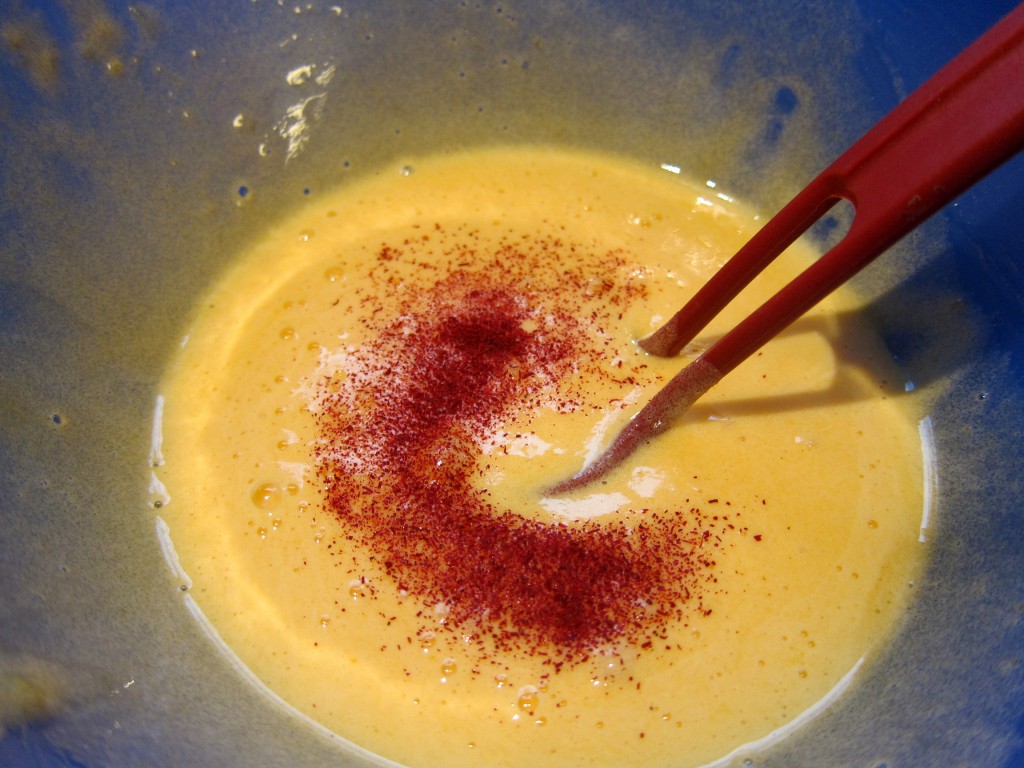
I began by whisking together the egg yolks, the sugar and the saffron. But you may well just combine everything (except for the juice) and whisk away (my “step by step-whisking” was actually done only to better let me enjoy the sight of the various ingredients coming together 😉 )
Continue to whisk the base, until it has reached the so-called “nappe stage“ (in the range of about 82-85º Celsius/179-185º F). Some would settle already for about 77-82º C/170-179º F: structurally, the base will be fine either way so the question here is more a one of health hazards – how thoroughly do you want to pasteurise your ice cream base?
Once at the nappe stage, take the custard base off the heat to cool, and – ultimately – chill. And the orange juice? In line with my ambition to avoid cooking the juice itself and preserve its natural freshness, I only added this essential part of the recipe to the custard base once it had begun to cool down somewhat.
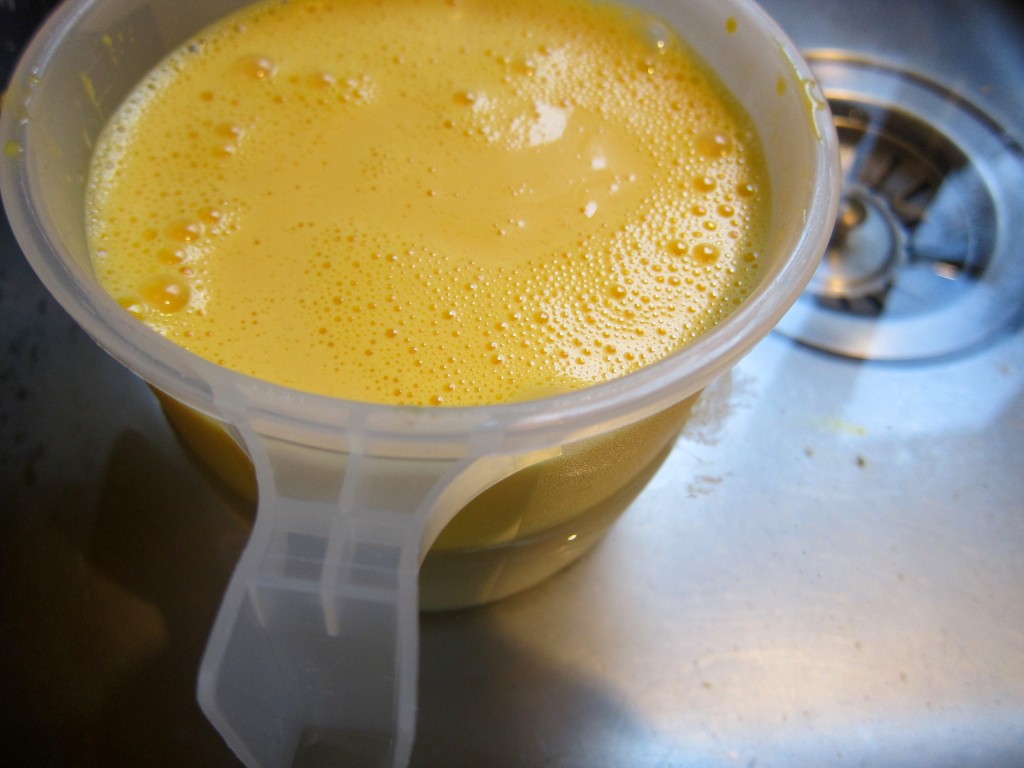
With or without ice cubes, I find that chilling the ice cream base in a sink filled with cold water is quite effective
Once properly chilled, churn the base in your ice cream machine. Or still-freeze using your freezer only: see good advise on how to best make ice cream without an ice cream machine here!
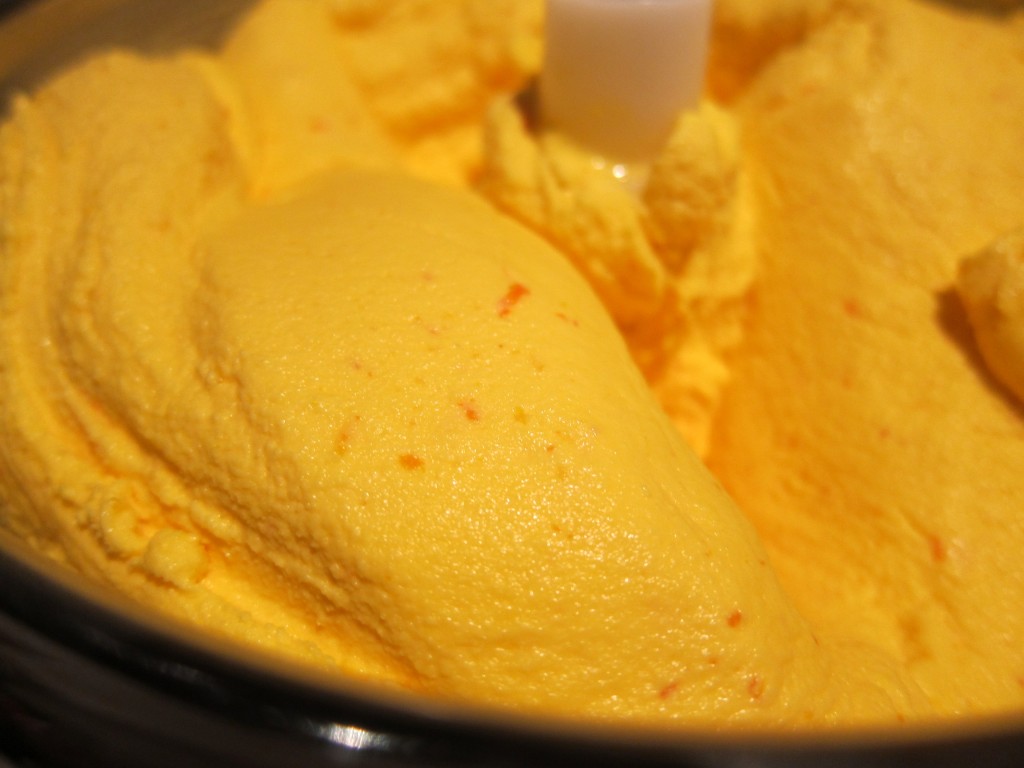
The saffron-orange ice cream being churned. Notice the small grated pieces of orange peel, adding both flavour, a little texture and visual appeal
The result
Delicious! And visually also very pleasing, thanks to the golden yellow of the saffron, discretely speckled with the grated orange rind.
And what about the flavour? While it is quite difficult to properly convey flavour-sensations in writing, saffron and orange clearly do form a very harmonious pair – the combined result is neither orange, nor saffron but more reminiscent of some strange, wonderous fruit: obviously with tones found in orange and in saffron, but still a kind of “flavour of its own” rather than a simple cumulation of the two. The consistency and texture of the ice cream is also nice, and I had great difficulties not to finish the whole batch on my own right after churning.
- 0.5 gram saffron of good quality
- grated peel of 1 orange
- 4 egg yolks
- 125 (1/2 cup) ml sugar
- 1 teaspoon inverted sugar (Agave nectar, corn syrup, or the likes)
- 150 ml (0.6 cup) orange juice
- 300 ml (1¼ cup) cream
- 150 ml (0.6 cup) milk
- Put all ingredients - except for the orange juice - together in a sauce pan, turn on the heat and - while stirring - bring the ice cream base it up to about 82-85º Celsius/179-185º F (Some would settle already for a temperature in the region of 77-82º C/170-179º F, although this depends on how thoroughly you want to pasteurise your ice cream base).
- Once the ice cream base has reached the desired temperature, take it off the heat, add the orange juice and let cool down (and, preferably, chill in the fridge).
- Once the ice cream base is cool/chilled, churn it in your ice cream machine according to instructions, or still-freeze (using your freezer only: see the special post on good advise on this).
- Once churned, store in a freezer-safe container, and cover with plastic film and lid.
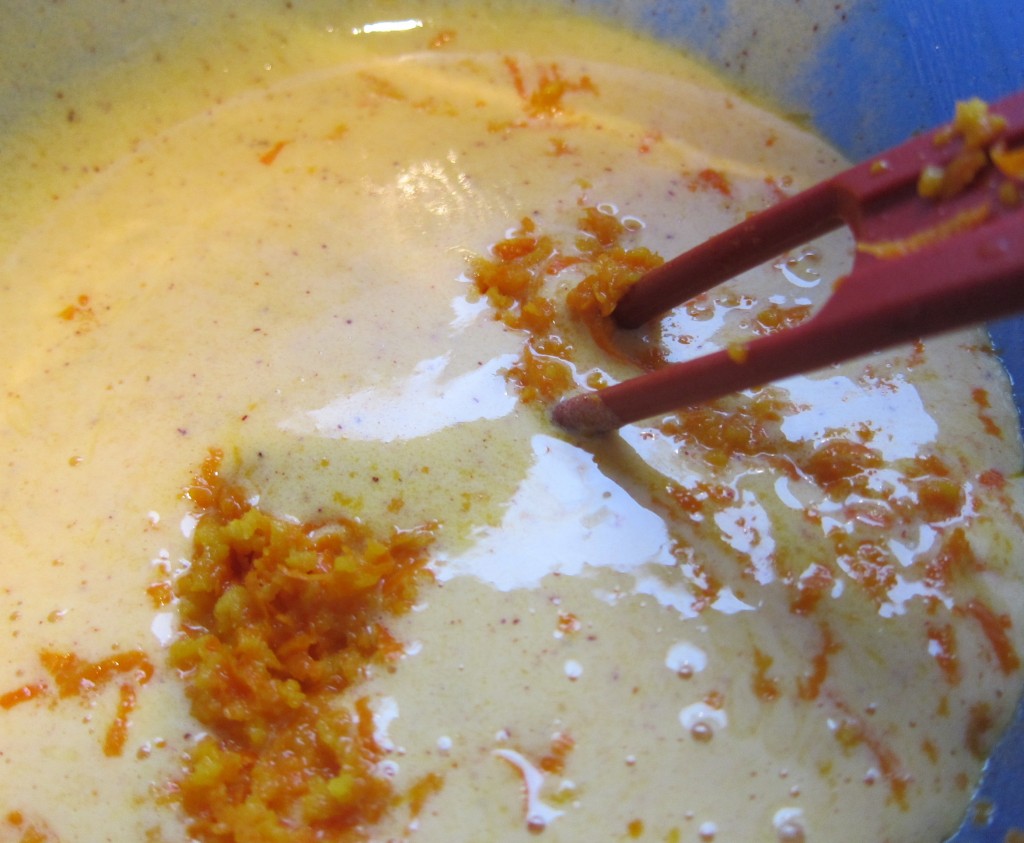
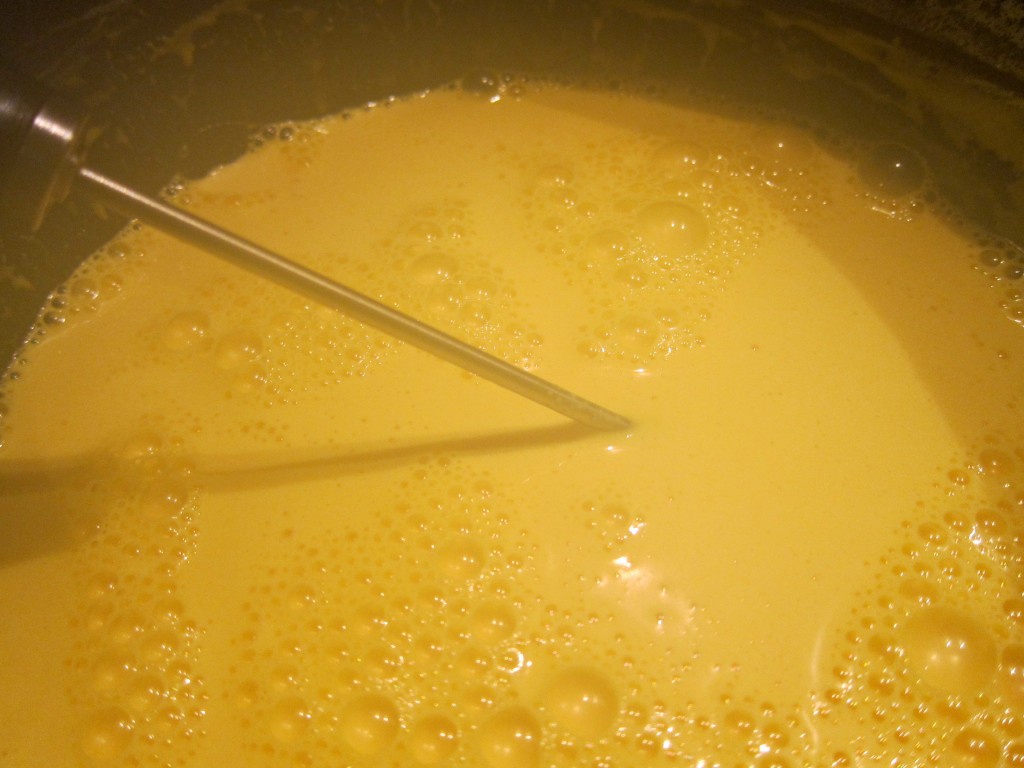
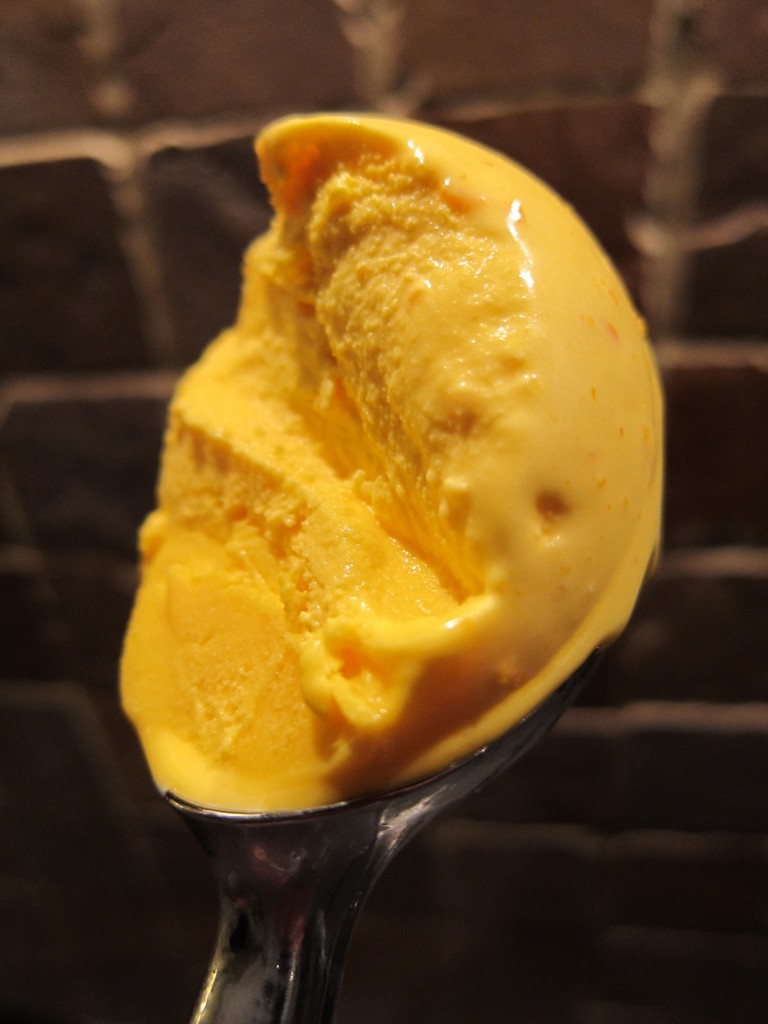

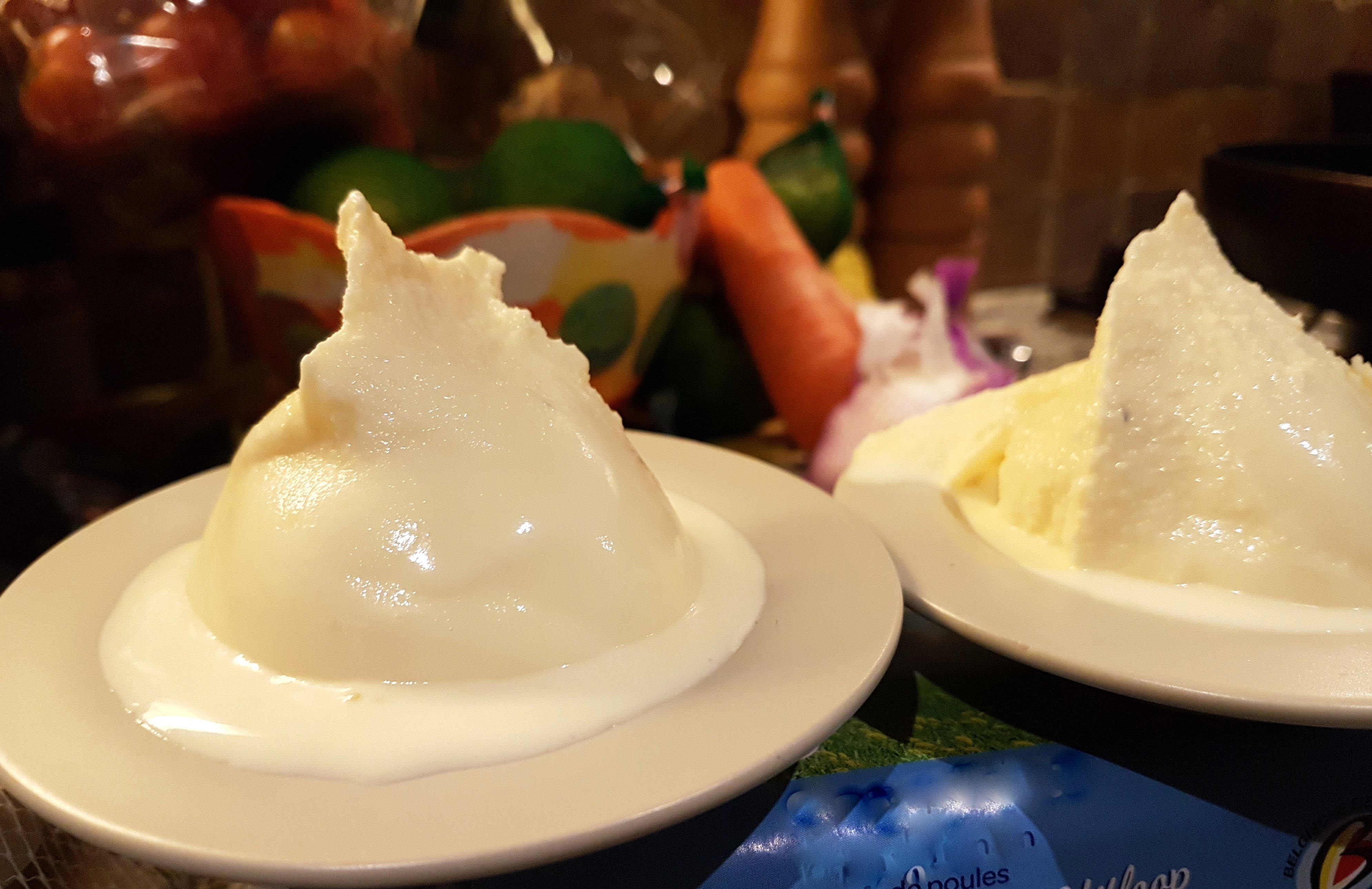



Oh my! I just made this one (no machine but still-freezing as you call it) and it’s so delicious. After making the custard and combining it with the juice already it was difficult to contain myself, I could’ve just eaten the mix right there before even freezing it. But I managed and I’m so happy with the result. What a brilliant recipe!
And hurray for your great website, I feel confident about all recipes here because you’ve tested them all and obviously know what you’re talking about from great experience. Glad I found this! Greetings from Holland & thanks a lot!
Lisa! So glad to hear that you’re happy with the result, and thanks for your many kind words 😀
Its really really good recipe until I but the egg yolks every time make my ice cream smell eggy : I don’t know how to deal with it???
Dear Khaled,
Assuming that there is nothing wrong with the eggs, one possible reason for “too eggy” ice creams can be that the custard base have been cooked to a too high temperature – something which tend to accentuate the “egginess” of eggs. You could possibly experiment by only heating your custard to about 78 degrees Celsius (172.4 F), and see if that makes any difference (mind you: this will make the base somewhat less pasteurised though).
Another possibility is to simply skip the eggs completely and instead go for an egg-free ice cream base: for example, take the base recipe for Sicilian gelato and flavour it with saffron and orange!
Would you please provide measurements for using the Philadelphia-style and please state weather you use fresh orange juice or from concentrate? Thank you.
Hi James,
You can use either fresh juice, or juice from concentrate: As always, better quality-ingredients make for better final results!
I have not made up any recipe for a Philadelphia-style version. If you want to try, I suggest that you take the pointers I provide in the post (= use more cream, and possibly whip it too) and seek further inspiration from the page dealing with this base (as well as the other Philadelphia-style recipes you easily can find on the site). Best of luck!